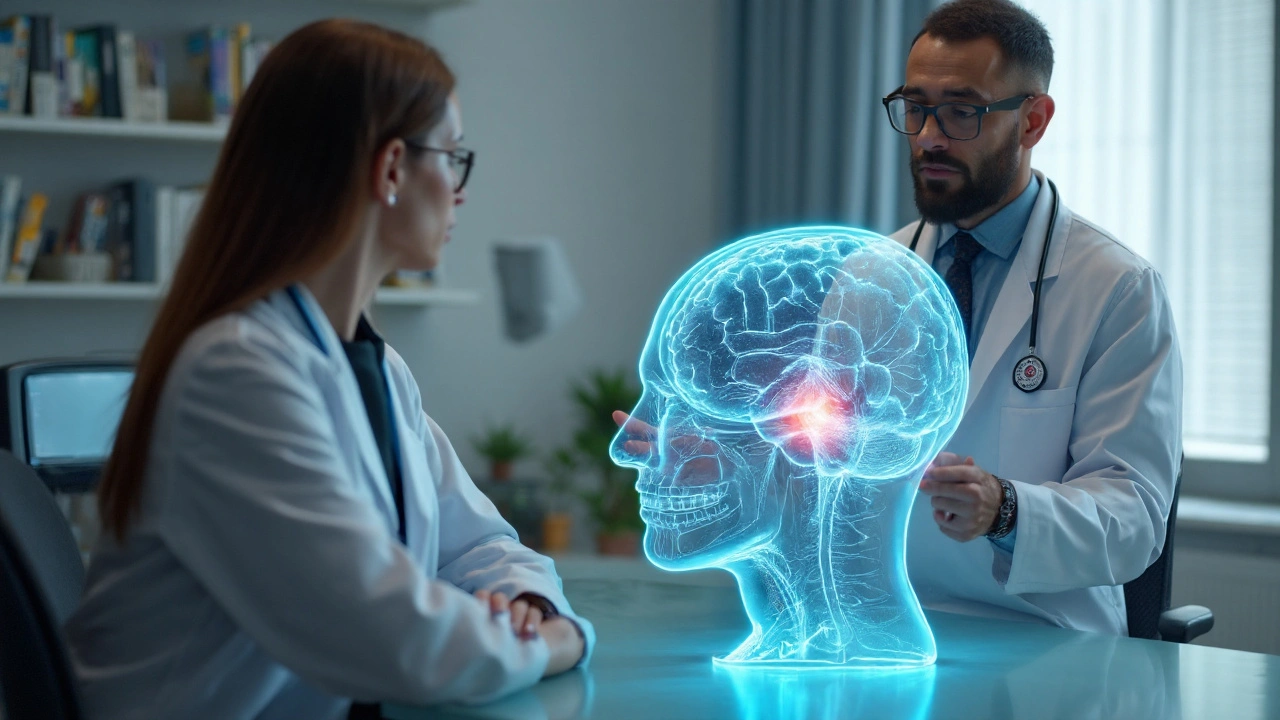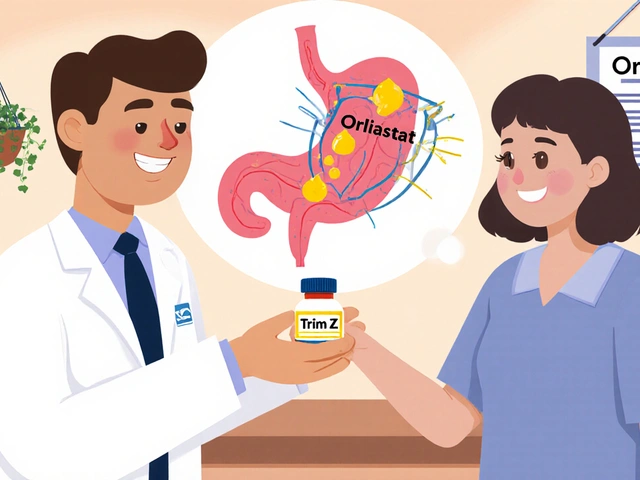
What is Subarachnoid Hemorrhage and Why Genetics Matter
Subarachnoid hemorrhage (SAH) is a type of stroke caused by bleeding into the space between the brain and the thin membrane that covers it. This sudden bleed can lead to severe brain injury, loss of consciousness, and even death. While high blood pressure, smoking, and head trauma are well‑known triggers, around 10‑15% of cases cluster in families, hinting at a genetic underpinning. Understanding those hereditary clues helps doctors spot at‑risk individuals before a catastrophic rupture.
How Genetics Drive SAH
Genes influence SAH primarily by shaping the structure and integrity of blood vessel walls. Mutations that weaken connective tissue or alter the extracellular matrix can cause tiny bulges-aneurysms are localized dilations of an artery that can burst under pressure. When an aneurysm ruptures in the subarachnoid space, it triggers SAH. Additionally, some genetic variants affect how the body responds to risk factors like hypertension, making the vessels more vulnerable.
Inherited Conditions That Raise SAH Risk
Several rare hereditary syndromes carry a markedly higher SAH incidence. Below are the most clinically relevant:
- Ehlers‑Danlos syndrome typeIV is a connective‑tissue disorder caused by COL3A1 mutations, leading to fragile arterial walls.
- Autosomal dominant polycystic kidney disease (ADPKD) is a genetic kidney disorder (PKD1/PKD2 genes) that also predisposes patients to intracranial aneurysms.
- Familial intracranial aneurysm is a pattern where aneurysms run in families without a known single‑gene cause, often uncovered by genome‑wide association studies.
While each condition is rare, their presence can increase SAH risk from a baseline 1 per 10,000 people to as high as 1 per 100 in affected families.
Key Genes and Variants Linked to SAH
Modern research has pinpointed specific genes that modulate aneurysm formation and rupture risk. The most studied include:
- COL3A1 - encodes typeIII collagen; pathogenic variants cause vascular Ehlers‑Danlos, raising rupture odds by 30‑fold.
- ELN - elastin gene; certain single nucleotide polymorphisms (SNPs) are single‑letter changes in DNA that modestly affect elastin elasticity, influencing aneurysm growth.
- PCSK6 - identified in large‑scale genome‑wide association studies (GWAS) as a locus associated with aneurysm size.
- SOX17 - regulates endothelial cell function; rare variants have been tied to early‑onset SAH in several cohorts.
These discoveries come from the International Stroke Genetics Consortium, which aggregates data from tens of thousands of patients worldwide.
Gene‑Environment Interactions
Even with a high‑risk genotype, lifestyle still matters. Smoking, for example, magnifies the effect of ELN SNPs by up to 4times, according to a 2022 NINDS analysis. Similarly, uncontrolled hypertension can accelerate aneurysm wall stress in carriers of COL3A1 mutations. The phrase genetic risk factors for subarachnoid hemorrhage therefore reflects a partnership between DNA and daily habits.

When and How to Get Tested
Genetic testing isn’t a blanket recommendation; it fits a targeted strategy:
- Family history. If a first‑degree relative suffered SAH before age55, discuss testing with a neurologist or genetic counselor.
- Clinical clues. Recurrent spontaneous nosebleeds, thin translucent skin, or early‑onset kidney cysts may hint at an underlying syndrome.
- Screening protocols. For confirmed COL3A1 or PKD1/PKD2 mutations, magnetic resonance angiography (MRA) is recommended every 2‑3years starting in adolescence.
The testing process typically involves a blood draw or cheek swab, followed by next‑generation sequencing panels that cover the most relevant SAH genes. Results take 2‑4weeks, and a certified counselor interprets the findings, providing recommendations on surveillance and lifestyle modifications.
Practical Steps for Individuals
Regardless of whether you have a known mutation, these actions can lower your SAH odds:
- Maintain blood pressure below 130/80mmHg; regular checks are crucial.
- Avoid tobacco in any form; even occasional vaping adds risk.
- Adopt a heart‑healthy diet rich in omega‑3 fatty acids, which may strengthen vessel walls.
- Discuss family history with your primary care doctor; a simple pedigree chart can reveal hidden patterns.
- If diagnosed with a high‑risk syndrome, follow the imaging schedule your specialist prescribes.
Comparison of Major Inherited SAH Syndromes
| Condition | Inheritance Pattern | Typical Age at First SAH | Prevalence in SAH Cohorts * | Recommended Screening |
|---|---|---|---|---|
| Ehlers‑Danlos syndrome typeIV | Autosomal dominant | 20‑40 years | ≈5% | MRA every 1‑2years |
| Autosomal dominant polycystic kidney disease | Autosomal dominant | 30‑50 years | ≈7% | MRA every 3years |
| Familial intracranial aneurysm (no single gene) | Complex/Polygenic | 40‑60 years | ≈10% | Baseline MRA, repeat every 5years |
*Data aggregated from multicenter studies up to 2023.
Related Concepts and Emerging Research
Beyond the listed syndromes, several broader topics intersect with SAH genetics:
- Hemorrhagic stroke is any stroke caused by bleeding, of which SAH is the most catastrophic subtype.
- Advances in polygenic risk scores combine many SNPs to estimate an individual’s overall SAH susceptibility.
- CRISPR‑based functional studies are now confirming how variants in ELN and PCSK6 affect endothelial cell behavior.
These lines of inquiry promise more precise risk calculators that blend genetics with imaging and lifestyle data.
Frequently Asked Questions
Can a normal brain scan rule out genetic risk for SAH?
No. Imaging shows existing aneurysms but cannot reveal the DNA variants that predispose vessels to form them. Genetic testing is required to assess inherited risk.
Do lifestyle changes lower the risk for someone with a high‑risk gene?
Absolutely. Controlling blood pressure, quitting smoking, and eating a heart‑healthy diet have been shown to reduce aneurysm growth rates even in carriers of COL3A1 or ELN variants.
Is genetic testing covered by insurance?
Many insurers cover targeted panels when there’s a strong family history or clinical suspicion. It’s best to check with your provider and request a pre‑authorization.
How often should I get screened if I have a family history of SAH?
For first‑degree relatives with early‑onset SAH, most experts recommend an MRA at age 20‑25, then repeat every 2‑3years. Frequency may increase if an aneurysm is detected.
What is the difference between a sporadic and familial aneurysm?
Sporadic aneurysms occur in individuals with no known genetic predisposition, while familial aneurysms appear in two or more first‑degree relatives, often linked to shared genetic variants identified in GWAS.
Can children be tested for SAH‑related genes?
Yes, especially for conditions like Ehlers‑Danlos typeIV, where early detection allows proactive monitoring and lifestyle counseling from adolescence.





Daniel McKnight
September 26, 2025 AT 13:20Jaylen Baker
September 28, 2025 AT 08:53Fiona Hoxhaj
September 29, 2025 AT 11:01Merlin Maria
September 30, 2025 AT 01:53Nagamani Thaviti
October 1, 2025 AT 01:13Kamal Virk
October 1, 2025 AT 05:15Elizabeth Grant
October 2, 2025 AT 07:08angie leblanc
October 3, 2025 AT 16:05LaMaya Edmonds
October 4, 2025 AT 07:33See Lo
October 6, 2025 AT 00:01Chris Long
October 6, 2025 AT 23:55Liv Loverso
October 7, 2025 AT 17:12Steve Davis
October 7, 2025 AT 21:51Attila Abraham
October 8, 2025 AT 00:15Michelle Machisa
October 9, 2025 AT 15:02Ronald Thibodeau
October 11, 2025 AT 11:24Shawn Jason
October 12, 2025 AT 03:24Monika Wasylewska
October 12, 2025 AT 10:12